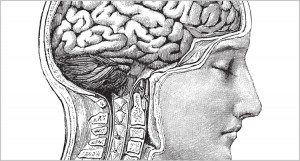This is an abbreviated version of yet another awesome article in Co.Design. (Have they picked up on all the plugs I’m giving them yet?!)
Jon Stein suggests in his piece that if you’re someone who finds yourself falling short, perhaps trying harder is not the answer. Perhaps using better products is the answer.
A recent survey of affluent households (those with incomes of $100K+) indicated that the desire to simplify life is difficult to attain. Fifty-five percent of survey respondents agree, “I am trying hard to simplify my life,” up from 48% in 2011, Stein pointed out. While the desire for simplification is there, the data doesn’t show any increase in simplification-related behaviors. Media hours per day are increasing and people are multitasking more.
Behavioral scientists have proved time and again that any product that assumes we are anything short of crazy is assuming too much. Humans make irrational decisions all the time. We’re good at making plans, Stein says. It’s why so many of us make resolutions every year. But it’s easy to think of being virtuous in the future, much harder in the present.
Even if you highly value the strength of your willpower (and make no mistake, some people have it more than others), it is not a constant personality trait, but something that fluctuates throughout the day. Here are some tips for using and/or designing products better.

1. AUTOMATION
Incorporating behavioral design into your product can help people by taking human error or emotion out of the equation. Automation is one of the best ways to overcome behavioral bias. A famous study documented by Freakonomics demonstrates that logic rarely plays a part in our decision-making: If people are automatically enrolled in a program–say, for organ donation or 401(k) contribution–the majority tend to stay in; if they are not automatically enrolled, the majority tend to stay out.
2. GOAL SETTING
Apps that help people set specific goals are smart. People who explicitly set resolutions are 10 times more likely to attain their goals than people who don’t. Setting specific goals (i.e., “I want to save $3 million for retirement in 30 years”) increases the likelihood of success than keeping goals vague. The goal-setting-and-tracking program Beeminder is a great example of a product that understands this–and reminds you with a sting if you get off track.
3. DIGITAL TO-DO LISTS
Thinking big requires small steps, and products like RememberTheMilk and Clear get that. Never has a to-do list looked so elegant. These apps help keep goals organized and on track with reminders and due dates. Breaking down an unwieldy goal into more manageable steps increases the likelihood of success.
4. FEEDBACK AND ACCOUNTABILITY
Put your reputation or money on the line. Up the ante of trade-offs between sticking to or straying from your goal. Fitocracy and Stickk are two clever apps that understand the psychology of motivation. Stickk uses a series of incentives and punishments, while Fitocracy harnesses the collective encouragement of the site’s community.




Recent Comments